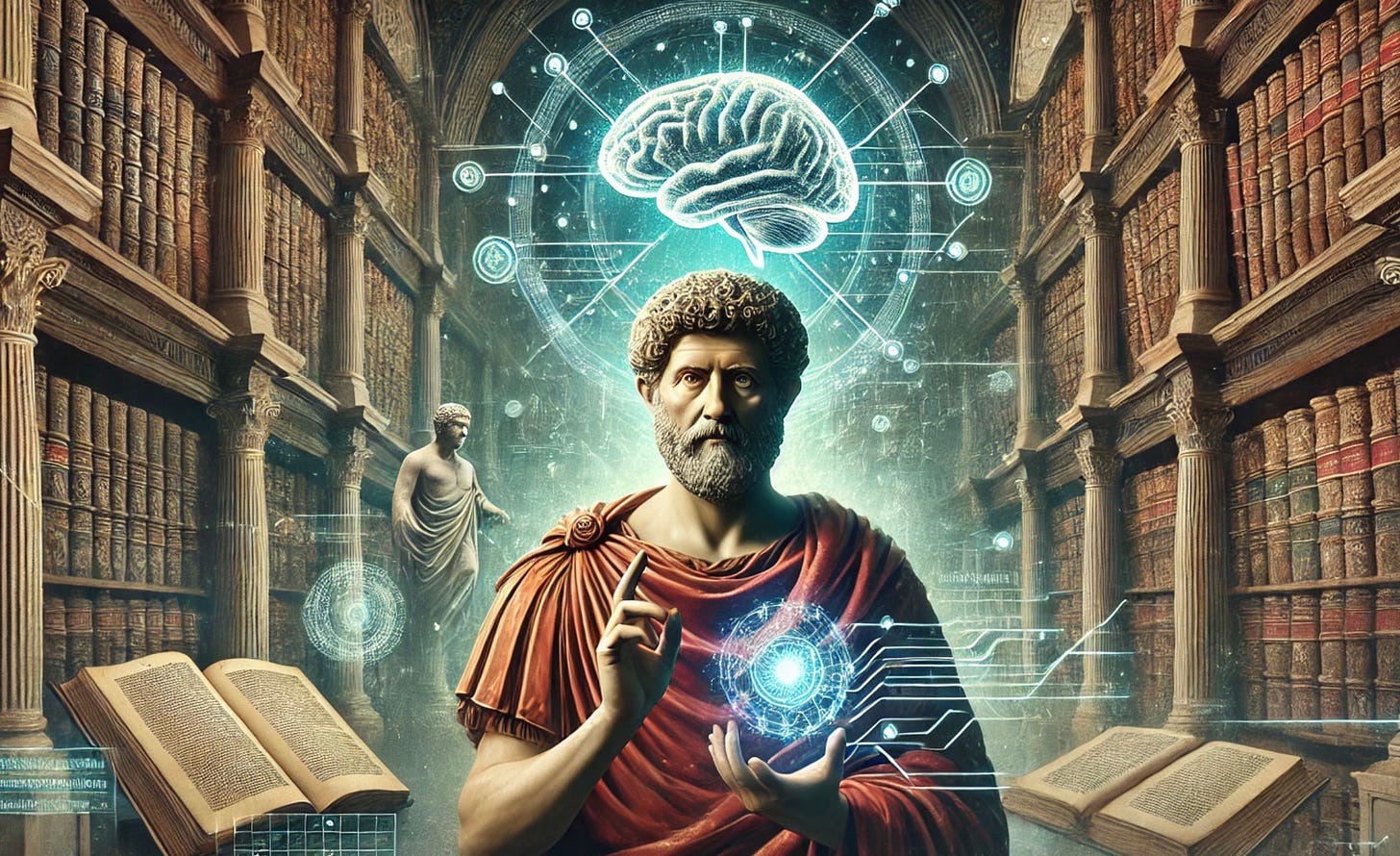Fork yourself
Theseus's paradox and the digital mind
I’ll admit it: I love reading Ray Kurzweil. His latest book, The Singularity is Nearer: When We Merge with AI, was released in June, and I’m nearly through.
In it he explores panprotopsychism—the idea that the tiniest building blocks of the world may possess some form of consciousness—and what consciousness itself really means.
At first glance, it’s easy to dismiss this as psychobabble.
Yet, for as long as robots, droids, and automatons have appeared in books and movies, we’ve entertained this imagination.
Take C-3PO in Star Wars, for example. To the observer, C-3PO is as conscious as Luke or Leia, despite not sharing their biology.
The Ship of Theseus
Theseus's paradox is an old thought experiment.
It asks a tricky question: If you take a ship and slowly replace all its wooden parts with new pieces, is it still the same ship once all the original parts are gone?
Its a question of identity, not consciousness but it serves as a powerful analogy.
Now, imagine the ship is your brain.
There is a new technology that can make an electronic copy of a small segment of your brain, one by one. At the end of the process there is a complete replica of your brain with the same information and function.
Is this “fork” conscious? If this electronic brain represents information the same way and claims to be conscious, how can you dismiss it?
The second question: is this electronic fork really you? Harder because “you” still exist.
Ray’s stance is no: because it would immediately diverge in experience from the biological you.
Think Michael Keaton’s copies in Multiplicity Don’t duplicate the duplicates!
But then the third and hardest question: what if that electronic brain fully and successfully replaced your biological one?
Is it you?
Brain prostheses are already here
This isn’t all hypothetical. Brain Computer Interfaces exist. See Elon’s Neuralink.
Nolan, a quadriplegic, controls his computer cursor with his mind. Playing games and improving his quality of life significantly.
Separately and for years Theodore Berger at USC has been advancing the state of the art for Hippocampal Prosthesis to encode long term memory on external silicon for individuals with brain damage.
The experiments show how a silicon chip externally connected to rat and monkey brains by electrodes can process information just like actual neurons. “We’re not putting individual memories back into the brain,” he says. “We’re putting in the capacity to generate memories.” In an impressive experiment published last fall, Berger and his coworkers demonstrated that they could also help monkeys retrieve long-term memories from a part of the brain that stores them.
Moreover, when it comes to hearing, over 700,000 people globally have cochlear implants that bypass damaged parts of the ear and stimulate the auditory nerve, effectively restoring hearing.
Recap:
Brain-computer-interfaces: exist and are in use. Backrock Neurotech an Synchron are also at the forefront of this field.
Neuronal memory silicon chips: while not fully mature, significant progress has been made, and researchers have coaxed memories via electronic stimulation in promising human studies.
Cochlear impacts: are well-established and widely used.
This does not even count visual prostheses (e.g. the Argus II) or other types of deep brain stimulation.
A thing’s goal is what benefits it—its good. A rational being’s good is unselfishness. What we were born for. That’s nothing new. Remember? Lower things for the sake of higher ones, and higher ones for one another. Things that have consciousness are higher than those that don’t. — V. 16
That cliffhanger…
So, let’s return to the fundamental question: if an electronic brain fully replaced your biological one, would it still be you?
Before answering, consider Ray Kurzweil’s insight:
While neurons generally persist, about half of their mitochondria turn over in a month.
A neurotubule has a half-life of several days; the proteins that add energy to the synapses are replenished every two to five days.
The NMDA receptors in synapses are replaced in a matter of hours; and the actin filaments in the dendrites last for about forty seconds.
Even though its not silicon, our brains are almost completely replaced biologically every few months.
His point: our unique way of encoding information and function keeps your identity intact. It's not about any specific structure or material.
It raises a tantalizing question: will we, one day, become more than human while still being "us"?
This is the premise of both the book and the singularity. It is when the "artificial" merges with the biological. This leads to a profound increase in both intelligence and consciousness.
So, as you ponder this, ask yourself one final question:
Will you fork yourself?


